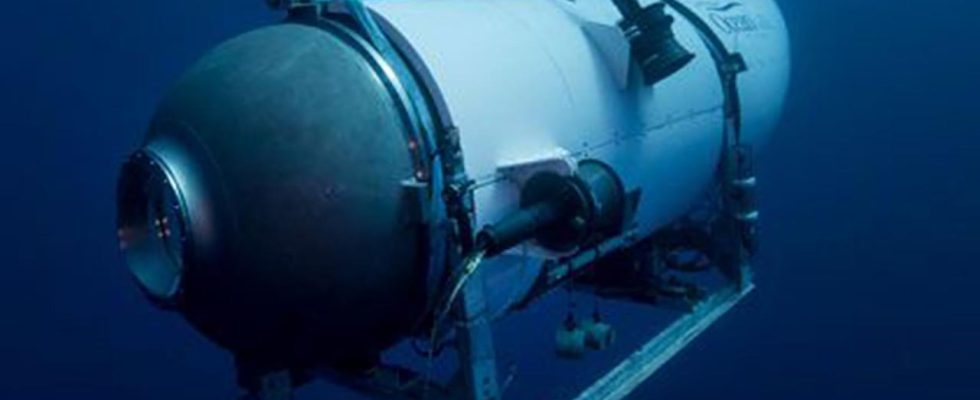They wanted to visit the wreck of the “Titanic”, then they lost contact with the submersible with five people on board. A search operation is underway, but the lack of oxygen and the rugged sea floor make the mission difficult.
Rescue workers continue to search the North Atlantic off the Canadian coast for a missing submersible that was supposed to bring five people to the remains of the “Titanic”.
It was “challenging to conduct a search in this remote area,” said John Mauger, commander of the US Coast Guard. “But we are using every means available to ensure we can locate the boat and rescue the people on board.”
The rescue workers only have a few days to search. A consultant for the operating company Ocean Gate Expeditions, David Concannon, said the submersible had oxygen on board for 96 hours. “It has now been 32 hours since the submarine left the surface,” he explained.
International aid started
The submersible, whose home port is in St. John’s, Canada, was reported missing on Sunday evening, said the Coordination Center for Rescue Operations in Halifax, Canada. A Canadian Coast Guard ship and a military aircraft assisted the search, which is being led by the US Coast Guard in Boston. According to them, the expedition’s escort ship lost contact about an hour and 45 minutes after the boat went under.
“We are totally focused on the submarine’s crew members and their families,” said Ocean Gate Expeditions. Several governments and companies supported the search and efforts to re-establish contact with the submersible. Authorities were working to get a remote-controlled vehicle capable of reaching a depth of 6,000 meters to the submarine as soon as possible. The “Titanic” lies at a depth of 3800 meters.
A retired British Navy Rear Admiral, Chris Parry, told Sky News that the rescue was a very difficult operation. The seabed is very uneven and the “Titanic” is in a ditch. “So trying to differentiate, especially with sonar, and targeting the area you want to search with another submersible is going to be very difficult.”
The expedition started from St. John’s in Canada towards the “Titanic” wreck.
Whereabouts of submersible uncertain
Since contact with the submersible was lost, it is unclear where it is. Alistair Greig, Professor of Marine Engineering at University College London, outlined two possible scenarios. Accordingly, submersibles usually have a drop weight – i.e. a mass that they can release in an emergency to bring the boat to the surface using its own buoyancy. “In the event of a power or communications failure, this could have happened and the submersible would then be bobbing on the surface waiting to be found,” Greig said.
But he also drew attention to another possibility that could have led to the loss of contact: a leak in the pressure hull of the boat. In this case, the prognosis is not good, said the marine technology expert. “If it has sunk to the sea floor and cannot resurface on its own, the options are very limited,” says Greig. The submersible could still be intact but be beyond the continental shelf. There are very few submarines that can go that deep.
entrepreneurs on board
Meanwhile, it was revealed that British businessman and adventurer Hamish Harding is on board. His company Action Aviation confirmed that the billionaire businessman was one of five inmates. “There is still enough time to enable a rescue operation, in which case survival equipment is on board,” said manager Mark Butler. “We all hope and pray that he comes back safe and sound.”
Also on board are a Pakistani businessman and his 19-year-old son. “Our son Shahzada Dawood and his son Suleman had embarked on a voyage to visit the remains of the ‘Titanic’ in the Atlantic Ocean,” British media quoted a statement from the family as saying.
Cost of $250,000 per person
The company began annual expeditions to the wreck of the Titanic, which sank in 1912 after hitting an iceberg, in 2021 to document the disintegration of the ocean liner. Around 1,500 people died in the sinking.
The wreck was discovered in 1985 and is infested with metal-eating bacteria. Some experts expect that the ship could disappear completely in a few decades, there are already gaping holes in the hull.
Two years ago, the first group of tourists funded the expedition with $100,000 to $150,000 per person. The cost is now $250,000 each. This year’s Ocean Gate expedition was the third to the sunken ocean liner.

